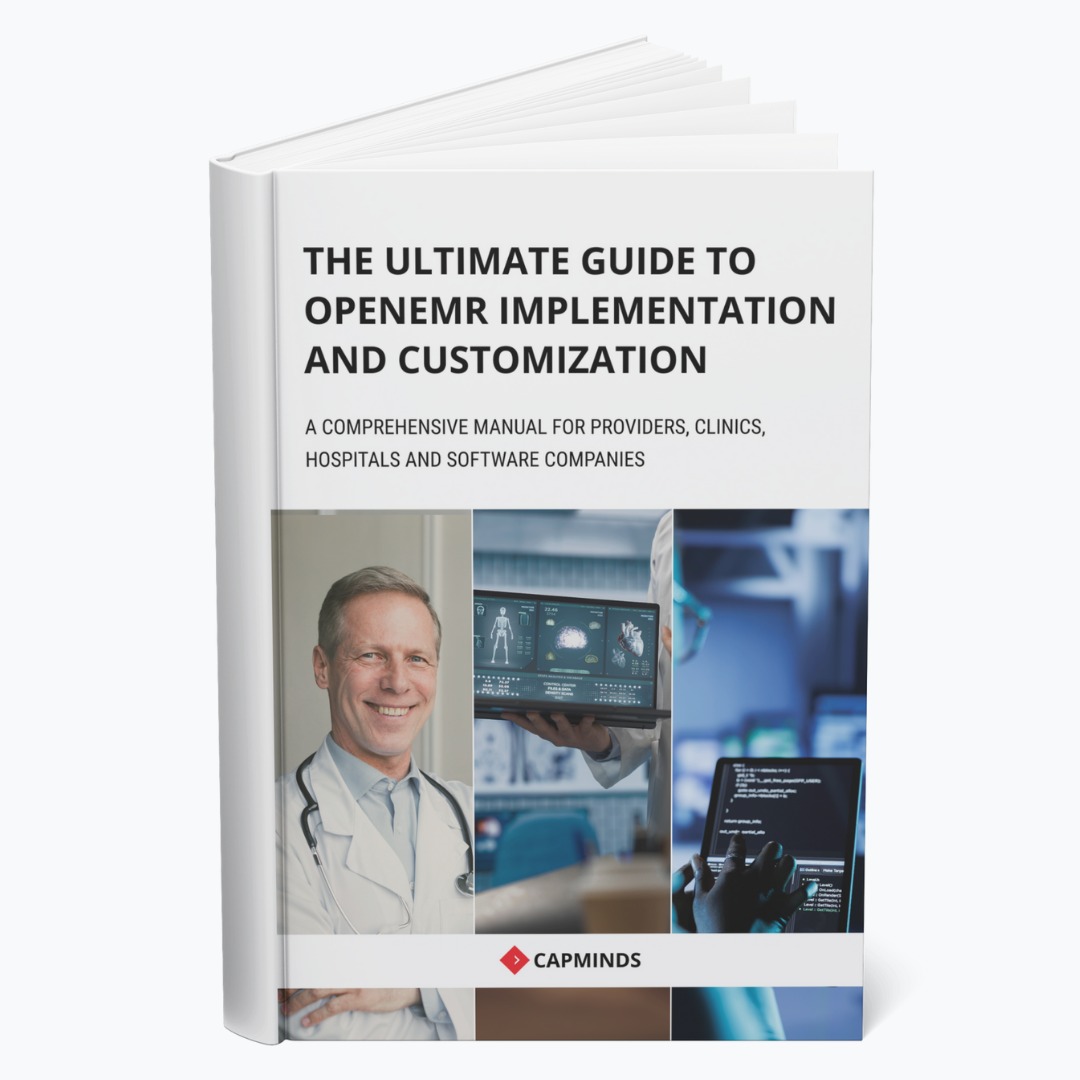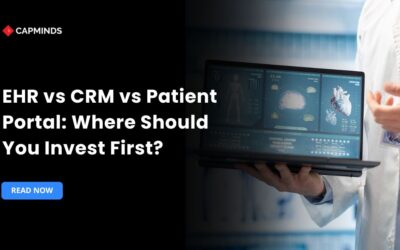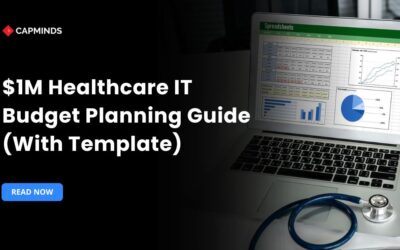In-House vs. Partnered IT in Healthcare: What Works at Scale
Technology is essential to the safe operation of clinics and hospitals in the modern healthcare system. Clinics and hospitals frequently have to choose between hiring outside expertise or creating an internal IT staff. Although in-house teams provide quick assistance and direct oversight, they may find it difficult to grow as patient demands increase.
Although they offer flexible resources and specialized capabilities, partnered IT providers need to be closely monitored by vendors and have data protection safeguards in place.
To scale, maintain uptime, and prioritize patient care, healthcare organizations must select the appropriate strategy. Costs, flexibility, and the capacity to provide care at scale are all impacted. In this blog post, we have shared what works at scale, whether it’s an In-house or outsourced healthcare IT team.
Understanding In-House IT in Healthcare
In-house IT teams work for the healthcare organization directly rather than employing outside contractors. They are responsible for server maintenance, medical software installation and updates, and network availability for the hospital. Outsourced IT, on the other hand, is a paradigm where services are provided by outside vendors who are not connected to the healthcare organization.
Key Functions and Responsibilities
To avoid downtime and security breaches, in-house IT personnel manage system maintenance, which includes:
- Patching operating systems
- Updating EHR software.
Thanks to their real-time technical support and network performance monitoring, clinicians can access patient data without delays. These teams also create and present training on new technologies and data security, and compliance best practices to healthcare personnel.
Benefits
Healthcare businesses can directly influence technology choices thanks to in-house IT, which makes it possible to create solutions that are tailored to certain clinical workflows.
Internal IT teams frequently have a greater awareness of operational demands due to their integration within the company, which can result in quicker resolutions and more specialized support.
Because direct ownership of hardware and data keeps sensitive data completely inside the organization’s IT borders, it can help improve patient privacy protections. This degree of control can lower the risk of fines and breaches by making compliance with HIPAA and other healthcare standards easier.
Challenges of In-House IT
Because businesses need to make investments in qualified staff, continuous training, and infrastructure upgrades, maintaining an internal IT team can be expensive. It may be challenging for smaller organizations to find and keep skilled IT workers, which could result in a personnel deficit and overburdened teams.
It can be difficult and costly to scale internal resources rapidly as healthcare requirements increase. Furthermore, internal teams might not have the specific knowledge needed for cutting-edge technologies like cloud-based telemedicine platforms or AI-driven analytics, which could impede innovation.
Exploring Partnered (Outsourced) IT in Healthcare
Partner IT, also referred to as outsourced HealthcareIT, is the process by which a healthcare organization contracts with a third-party vendor to manage services like cybersecurity, software management, and network maintenance.
These suppliers provide help desk support, system monitoring, and routine maintenance so hospital staff can focus on clinical concerns.
- IT outsourcing reduces overall spending by converting capital expenditures into controllable operating costs.
- Hospitals can obtain state-of-the-art expertise without having to train internal staff thanks to third-party IT firms that maintain teams proficient in developing technologies, cloud, artificial intelligence, and enhanced security.
- Outsourced providers can swiftly scale up support and resources in response to spikes in patient loads or the introduction of new services, avoiding the delays associated with hiring and onboarding.
- Clinicians and administrators can spend more time enhancing patient outcomes and less time dealing with technical issues by assigning IT chores to others.
Sharing confidential patient data with third parties raises questions about HIPAA compliance and breach risk, which calls for strict vendor audits and security measures. Relying too much on a vendor may backfire if they have staffing issues, financial troubles, or outages.
Differences in organizational culture, reaction times, or workflows may lead to misunderstandings and slow system integrations. Contracts often involve extra fees for custom work or extra services; without clear SLAs, total costs could exceed initial estimates.
Comparative Analysis: In-House vs. Partnered IT
While in-house IT frequently necessitates significant upfront investments in personnel, equipment, and software, outsourced IT converts these costs into predictable ongoing expenditures, making budget management easier for businesses.
Although internal teams have complete control and can precisely tailor systems to clinical procedures, they can find it difficult to grow rapidly as demand increases.
Faster adoption of innovations like cloud services and cybersecurity best practices is made possible by partnered IT’s flexibility and availability to specialist experts. However, depending on outside suppliers raises certain issues with vendor lock-in, data security, and compliance that call for close supervision.
Cost Implications
- Large capital expenditures for servers, software licensing, and full-time staff are necessary for in-house IT, which frequently raises overall expenses for smaller businesses.
- Partnered IT often lowers overhead and aligns costs with real usage by converting these expenses into predictable monthly fees.
Control and Customization
- An internal IT team offers total insight and may customize all system components, including network policies and electronic health records, to meet organizational requirements.
- Outsourced providers usually provide standardized platforms; although this expedites deployment, significant customisation frequently comes with additional costs or is constrained by vendor capabilities.
Scalability
- Hiring more employees and investing in more infrastructure are necessary steps in scaling up internal resources, which can take months and large financial outlays.
- Healthcare companies may easily handle increases in patient flow or the launch of new services by using outsourced IT services to immediately modify capacity.
Expertise and Innovation
- For cutting-edge technologies like AI-driven analytics or sophisticated cloud deployments, internal teams might not have specialized expertise and will need to make significant training investments.
- Providers get faster access to state-of-the-art solutions thanks to external partners’ extensive talent pools and ongoing expertise updates.
Compliance and Security
- In order to stay up to speed with changing requirements, managing compliance internally entails allocating resources to HIPAA risk assessments, policy revisions, and frequent audits.
- Strict vendor selection, unambiguous contract terms, and continuous oversight are necessary for outsourcing to guarantee that partners follow security guidelines and swiftly report issues.
Decision-Making Framework
To assist healthcare executives in selecting the best IT strategy at scale, here is a straightforward decision-making framework. Understanding what your company needs is the first step.
Next, costs and advantages are compared, your risk tolerance is evaluated, and hybrid models that combine internal control and external flexibility are examined.
Assess Organizational Needs
- First, healthcare leaders should map out their current technology environment, identifying critical systems and workflows that support patient care.
- They must take into account things like the size of their IT staff, the software and hardware they already have, and their anticipated future expansion.
- Any IT solution, whether in-house or partnered, will be in line with the organization’s objectives and capabilities if these needs are understood.
Analyze Cost-Benefit
- The total cost of ownership for in-house and outsourced IT must then be compared by enterprises, taking into account infrastructure, training, support fees, and salaries.
- This cost-benefit analysis frequently shows that outsourcing can free up cash flow by converting significant capital expenditures into predictable operating costs.
- Unexpected costs, like exit or customisation fees, should be taken into consideration as they may cancel out some of the savings.
Evaluate Risk Tolerance
- The degree of uncertainty that a company may tolerate when entrusting IT tasks to outside providers is known as its risk tolerance.
- Healthcare providers should carry out comprehensive vendor risk assessments, analyzing incident response plans, data security controls, and HIPAA compliance.
- While external partners frequently have strong programs but add third-party risks, internal teams may be better at managing compliance directly but may lack specific security skills.
Consider Hybrid Models
- Last but not least, a hybrid IT approach, which combines internal and external resources, provides the best of both worlds for a lot of healthcare firms. W
- ith hybrid solutions, providers can use cloud scalability and vendor knowledge for non-critical applications while maintaining sensitive data on-premises.
- By increasing flexibility, this strategy can assist hospitals in growing during periods of high demand without making unnecessary investments in long-term infrastructure.
- As the demands for telemedicine and healthcare AI increase, hybrid approaches provide access to specialist talents and high-performance computing without sacrificing internal control.
CapMinds Healthcare IT Consulting
As you plan your 2025 healthcare IT budget, choosing the right technology investments is key to long-term success. CapMinds helps healthcare organizations focus on what truly matters: smarter systems, seamless workflows, and sustainable growth.
Here’s what you should invest in and how we help:
- Custom EHR Solutions – Streamline documentation and align with your clinical goals.
- Interoperability & Integration – Avoid fragmented systems with secure, scalable data exchange.
- Telehealth Platforms – Support hybrid care models and boost patient engagement affordably.
- Healthcare Analytics – Turn your data into actionable insights that guide better decisions.
- Revenue Cycle Optimization – Improve billing accuracy and increase financial returns.
Why CapMinds?
We help you avoid overspending on unnecessary tech and guide your investments toward scalable, compliance-ready solutions.
With our consulting expertise, automation tools, and healthcare IT insight, you’ll be equipped to make budget-friendly choices that drive clinical and operational excellence.
Let CapMinds be your partner in smart healthcare IT planning for 2025. Contact us today to get started.




